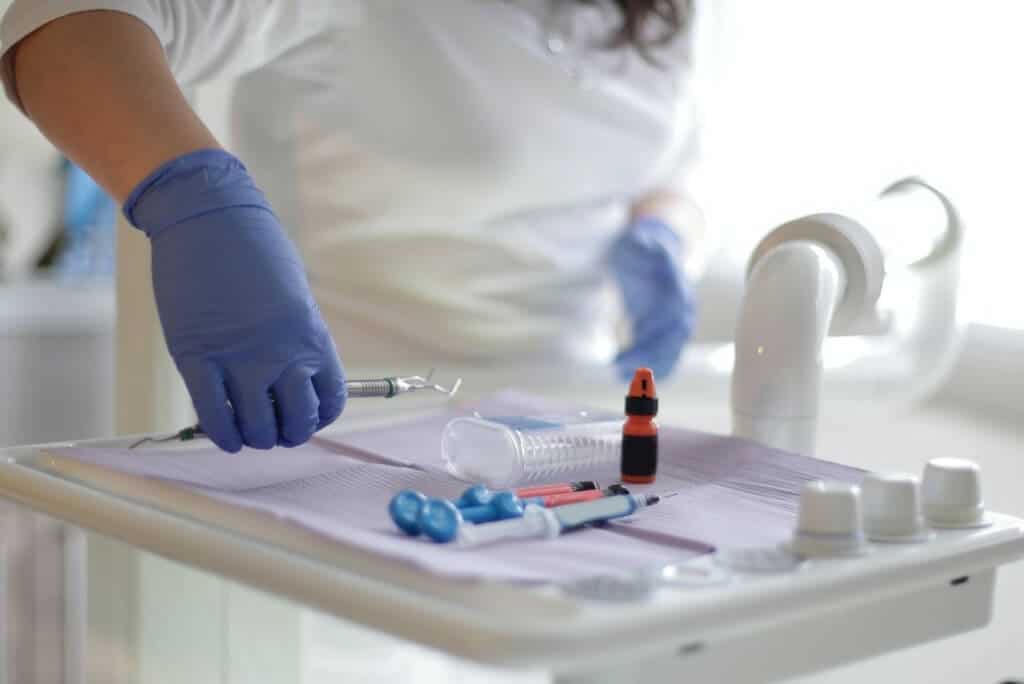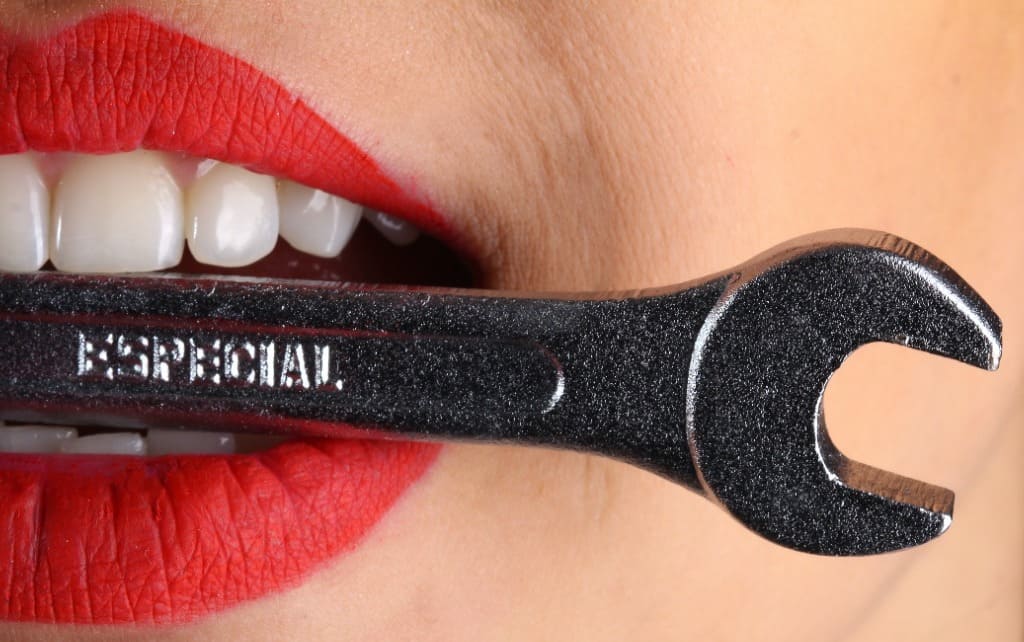When decay destroys part of the tooht, dental inlay is a conservative technique for your comfort, safety and at a lower price than dental crowns. your tooth, you should go to your dentist to remove the decay and do the dental restoration that corresponds to you, most likely a dental onlay is your solution.
But, at this point it is very important to decide correctly the technique to use to prevent the restoration from failing and causing cavities under it again.
Here we present the dental inlays, onlay or overlays
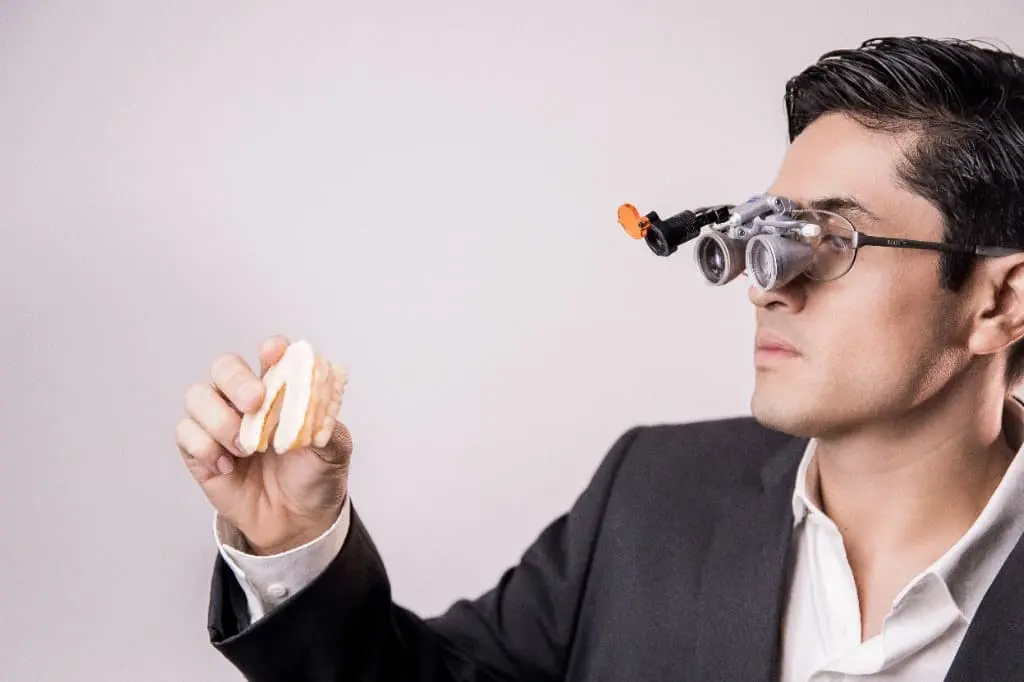
Table of Content
A Conservative Dental Approach
The reason for this approach is that there is nothing like a natural tooth and as such it must be preserved at all costs.
This way of doing dentistry is based on keeping the part of the tooth that the caries could not affect as intact as possible.
Tip: In the case of restorations, the conservative thing goes from a minimal use of the drill to a restoration that respects the tooth and lengthens your life.
Dental Onlay – Inlay
A dental onlay inlay is a conservative dental restoration made to measure for you and in the dental laboratory. It is used in posterior teeth, molars and premolars.
It has the exact shape of what your tooth is missing and is made of more resistant and aesthetic materials than the dental fillings .
Tip: This characteristic exactly gives reason to the onlay / inlay name because its shape is such that it fits perfectly on your tooth.
This fitting minimizes the risk of crevices where bacteria can creep and form cavities underneath..
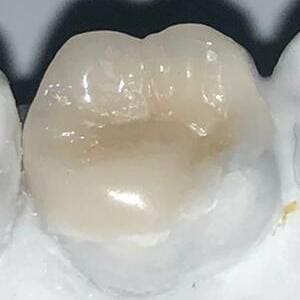
Dental inlays and onlays offer a number of benefits compared to other treatment options. These are some of the most notable benefits:
- Durability: Inlays and onlays are designed to withstand the pressure of chewing and resist long-term wear. Unlike traditional fillings, which can weaken over time, inlays and onlays offer a long-lasting solution that can last for many years.
- Aesthetics: Inlays and onlays are made of materials that resemble the color and texture of natural teeth. This makes them practically invisible, which contributes to a more aesthetic and natural smile.
- Preservation of tooth structure: Inlays and onlays preserve most of the original tooth structure. Unlike dental crowns, which require greater removal of healthy tooth tissue, inlays and onlays allow most of the natural tooth structure to be preserved.
- Stain resistance: Ceramic inlays and onlays are especially stain resistant. This means that they will maintain their aesthetic appearance over time, without fading or staining easily.
- Precise fit: Inlays and onlays are custom made to perfectly fit the shape and size of the affected teeth. This ensures a precise fit and a dental restoration that feels comfortable and natural.
Overall, dental inlays offer a durable and aesthetic solution for restoring damaged or worn teeth. Their strength, natural appearance, and preservation of tooth structure make them a popular choice among patients and dentists.
Dental Onlay Use Cases
The technology of dental materials and adhesives has evolved so much that today dental onlays are the first option in large restorations.
In general, they are indicated in the following cases:
- Large restorations of molars or premolars that still have healthy walls.
- Restorations in areas of difficult access (near the gum or on surfaces adjacent to another tooth (interproximal), where to place shims , which are made manually directly in your mouth, means a high risk of poor sealing and leaks.
- They are the de facto restoration option after root canal treatments because the coronal seal is exceptional, protecting much more your endodontics, avoiding dental fractures and retreatments.
- Bite raising when there is massive wear on the molars due to bruxism, in these cases they are called tabletops
Types: Inlay, Onlay, Overlay
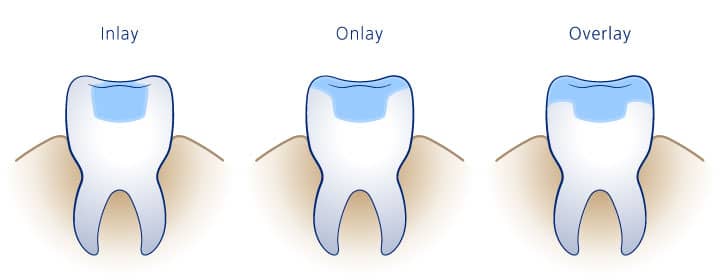
The types can be: inlay, onlay, overlay or tabletops
They are called Inlay when the restored part is inside the tooth and they are almost in disuse since it can be done directly in the mouth as a dental filling .
Onlay refers to an inlay that covers the entire upper face of the tooth
The overlay covers beyond the upper face of the tooth, up to the outer faces.
Dental Tabletops
Tabletops are onlay restorations, They can be considered a type of dental veneer that covers the tooth chewing surface, which is why they are also known as occlusal veneers and are normally used in cases of wear of a large number of occlusal surfaces of posterior teeth.
These wear and tear are normally caused by bruxism, which is clenching the teeth mainly at night while sleeping.
These excessive forces erode the occlusal surfaces and incisal edges of the teeth, both to the point of destroying them, making them smaller, and reaching the nerve and affecting it.
This decrease in the size of the teeth causes your bite to lose its vertical dimension, that is, it becomes deep and reduced. In this case there is a complete treatment based on tabletops called bite lift.
Before treatment, it is necessary to carry out a diagnostic wax-up to be able to plan the appropriate height that the tabletops should have, as well as their function and aesthetics.
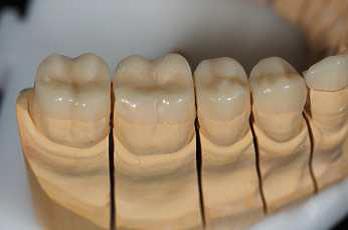
Materials for making the Inlays
With the evolution of technology, materials have been developed whose characteristics result in the quality and aesthetics of an inlay or a tabletop.
The main materials used are:
- Regular Composite: it is the same material as fillings, and is rarely used in inlays.
- Ceromer: it is a special composite with much greater resistance than regular composites.
- Ceramic: it is much more resistant than ceromer and additionally has unmatched beauty and naturalness.
Process of placing an inlay
The process of placing dental inlays and onlays generally requires two visits to the dentist.
During the first visit, the following steps will be carried out:
- Tooth preparation: The dentist will remove any cavities or defective restorations from the affected tooth. Next, a tooth preparation (base or bio-base) will be performed to allow the inlay to fit properly. This may involve removing a small amount of healthy tooth tissue.
- Taking Impressions: Once the tooth is prepared, dental impressions will be taken to create an accurate model of the tooth. These impressions will be sent to the dental laboratory, where the inlay will be made to your size.
- Placement of a temporary inlay (if applicable): In some cases, while the custom inlay is being manufactured, it may be necessary to place one temporarily on the affected tooth. This will protect the tooth and prevent any sensitivity during the waiting period.
During the second visit, which usually takes place a few weeks after the first, the following steps will take place:
- Removal of temporary inlay (if applicable): The temporary inlay will be carefully removed and the affected tooth will be cleaned.
- Inlay trial and fit: The dentist will try the custom inlay or onlay on the affected tooth to make sure it fits properly. Any necessary adjustments will be made to ensure a precise fit and comfortable bite.
- Adhesion / Bonding: Once the inlay fits properly, it is firmly bonded to the tooth using a special dental adhesive. The dentist will ensure that the inlay is correctly positioned and will make any final adjustments if necessary.
After placement of dental inlays or onlays, you may experience some tooth sensitivity during the first few days. This is normal and usually goes away on its own.
It is important to follow the dentist’s instructions and maintain good oral hygiene to ensure the durability and success of the treatment.
Care and maintenance
To keep dental inlays in good condition, it is important to follow a proper care and maintenance routine.
Here are some tips to keep your inlays in perfect condition:
- Good oral hygiene: Brush your teeth at least twice a day with a soft toothbrush and fluoride toothpaste. Be sure to carefully brush around the inlays and onlays to remove any plaque or food residue.
- Flossing: Floss daily to clean between your teeth and around your inlays. This will help remove plaque and prevent cavities from forming in hard-to-reach areas.
- Avoid harmful foods and drinks: such as sticky foods, carbonated drinks, and hard foods that can cause fractures.
- Avoid bruxism: If you tend to clench or grind your teeth, ask your dentist about using a dental splint to protect your teeth from excessive wear and tear.
- Regular Dental Visits: Schedule regular visits to the dentist for dental cleanings and checkups. The dentist will be able to evaluate the condition of your inlays and make any necessary adjustments or repairs.
By following these recommendations, your inlays can last for many years and maintain their original appearance and functionality. Remember that proper care is essential to ensure the long-term success of your dental treatment.
Durability of dental inlays
Durability may vary depending on several factors, such as the material used, proper care and maintenance, and the patient’s overall oral health. In general, dental inlays are designed to be a long-lasting and strong solution.
Ceramic ones are usually very durable and can last for many years with proper care. They are stain resistant and do not fade easily, making them a popular choice for those looking for an aesthetic and long-lasting solution.
Composite ones can also be durable, although they may be more prone to wear or peel off over time. However, with proper care and regular visits to the dentist, they can last for many years.
It is important to note that durability will also depend on the patient’s overall oral health. Maintaining good oral hygiene, avoiding harmful habits such as bruxism and visiting the dentist regularly are key factors to ensure the durability of your dental inlay.
Dental Inlay Onlay Price
There are two main factors that play a very important role in determining the cost of an inlay onlay, namely:
- Material: It depends on whether it is made of resin, ceramer or ceramic. In that same order, quality and aesthetics increase and with these factors so does the price.
- Quantity: the price may be lower, the greater the number of inlays to be made simultaneously. Technically speaking, the time dedicated to serial dental work (several pieces at a time as in the case of bite raising) is more efficient than in a unitary manner, which allows the unit price of each inlay to be improved.
The best thing in all cases is to consult your dentist to evaluate your case and give you all the options.
Dental Onlay Versus Dental Crown
The main difference is that the dental crown is a cover in the shape of your tooth that completely covers all that remains of the tooth and the onlay only a part.
In the onlay, the tooth is not carved, but the healthy faces of the tooth to be restored are used to the maximum.
The price of an onlay is less than that of a crown because the manufacture is a little simpler and less material is consumed.
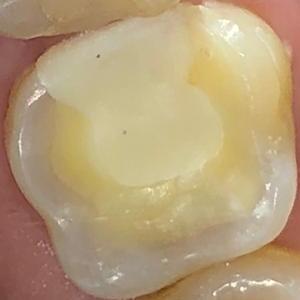
Similarities with Dental Crown.
- Both require a base to install on. This base is a core build-up that serves to strengthen the tooth and protect it from fractures.
- Both the onlay and the crown are custom made in the dental laboratory for the patient. We know this as the indirect technique.
- You need approximately 3 visits to the dentist to prepare them.
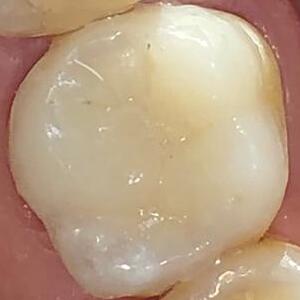
Conclusions
New adhesive and material technologies have allowed us to be much more conservative and we can offer more economical and comfortable solutions for large restorations that our patients require.
Like any dental technique, it requires to be applied in cases where it is really convenient to perform it and only your trusted dentist can determine it.



